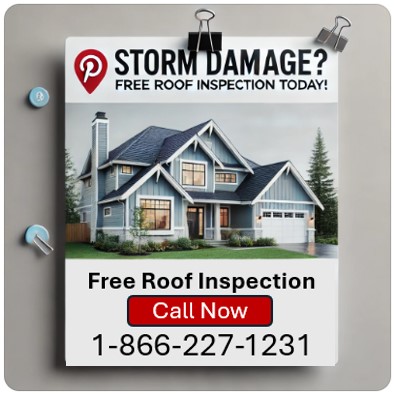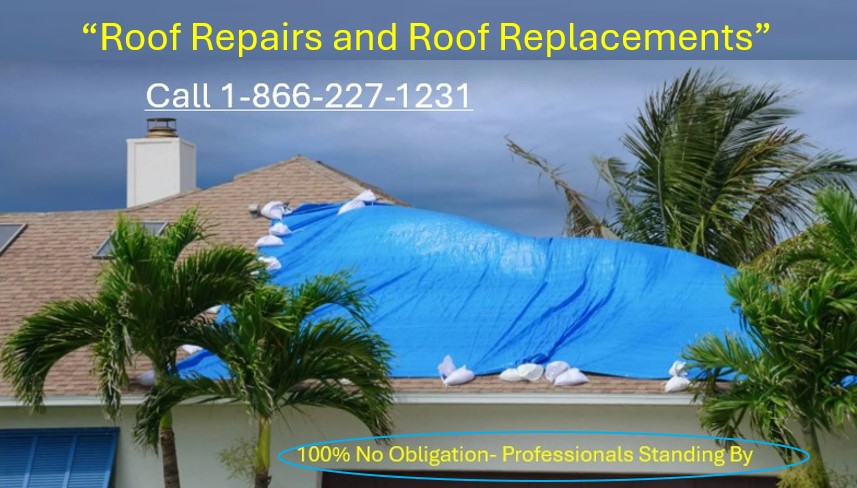After the Storm: How to Assess and Address Roof Storm Damage
When severe weather strikes, your roof takes the brunt of nature's fury. Wind, hail, falling debris, and heavy rainfall can all cause significant damage that requires prompt attention. This comprehensive guide will help homeowners identify storm damage, understand the insurance claims process, and take the right steps to protect their property.
Types of Storm Damage and How to Identify Them
Different weather events cause distinctive patterns of roof damage. Here's what to look for after specific storm types:
Wind Damage
- Lifted or missing shingles: High winds can break the seal between shingles and lift or completely remove them
- Creased shingles: Wind can bend shingles, creating visible lines where they've been folded
- Damaged flashing: Metal components around chimneys, vents, and valleys may be bent or displaced
- Debris impact areas: Tree limbs or other wind-blown objects can puncture roofing materials
Hail Damage
- Impact marks: Round, dark spots where granules have been knocked off asphalt shingles
- Dents and depressions: Particularly visible on metal roofing, gutters, and downspouts
- Cracked or broken shingles: Severe hail can crack or split roofing materials
- Granules in gutters: Excessive amounts indicate hail has stripped protective coating from shingles
Heavy Rain Damage
- Water stains on ceilings or walls: Indicates water has penetrated the roof system
- Saturated insulation in attic: Becomes less effective and can promote mold growth
- Overflowing gutters: Can force water back under roofing materials
- Erosion around downspouts: Shows improper drainage that may affect foundation
Conducting a Post-Storm Roof Inspection

Safety is paramount when assessing storm damage. Follow these guidelines:
Ground-Level Assessment
- Walk the perimeter of your home looking for fallen shingles or metal pieces
- Inspect gutters and downspouts for dents or detachment
- Check for visible sagging or depressions in the roofline
- Look for water stains on exterior walls
- Note any debris impact against siding that might suggest roof damage as well
Interior Inspection
- Check attic spaces with a flashlight, looking for:
- Water stains or active leaks
- Light penetrating through the roof
- Wet insulation
- Sagging roof deck
- Examine upper floor ceilings for water spots or discoloration
- Test walls near rooflines for dampness
Professional Inspection
After significant storms, consider hiring a qualified roofing contractor to perform a comprehensive inspection. Professional roofers can:
- Safely access all roof areas
- Identify hidden damage not visible from ground level
- Document findings for insurance purposes
- Recommend appropriate repairs or replacement
- Provide temporary protection for damaged areas
Understanding the Insurance Claims Process

Most homeowners insurance policies cover storm damage, but navigating the claims process requires attention to detail:
Immediate Steps
- Document all visible damage with dated photographs and videos
- Review your insurance policy to understand coverage, exclusions, and deductibles
- Make temporary repairs to prevent further damage (save all receipts)
- Contact your insurance company to report the damage
- Schedule an adjuster inspection
Working with Insurance Adjusters
- Be present during the adjuster's inspection
- Share your documentation and contractor's assessment
- Ask questions about their findings
- Request a detailed breakdown of their damage assessment
- Understand the difference between actual cash value and replacement cost coverage
Common Claim Challenges
- Dispute over damage cause: Adjusters may attribute damage to wear and tear rather than storm events
- Pre-existing conditions: Damage that existed before the storm may not be covered
- Coverage limitations: Some policies have specific sublimits for wind or hail damage
- Depreciation calculations: How the insurance company values your existing roof
- Overlapping damage: When multiple storms affect the same area over time

Emergency Repairs and Temporary Solutions
While awaiting professional repairs, these temporary measures can prevent further damage:
For Missing Shingles
- Apply roofing cement under adjacent shingles
- Install replacement shingles as a temporary patch
- Secure heavy-duty tarps over affected areas
For Punctures and Holes
- Cover with plastic sheeting secured with boards
- Apply roofing mastic or silicone sealant around the perimeter
- Place buckets under interior leaks to prevent water damage
For Extensive Damage
- Professional tarp installation is recommended
- Consider relocation if structural integrity is compromised
- Secure valuables and electronics away from potential water paths
Choosing the Right Storm Damage Repair Contractor
Unfortunately, "storm chasers" – unscrupulous contractors who follow severe weather events – often target affected neighborhoods. Protect yourself by:
- Verifying local business addresses and licenses
- Checking references and online reviews
- Confirming proper insurance coverage (liability and workers' compensation)
- Getting multiple written estimates
- Never paying full amounts upfront
- Avoiding contractors who offer to "cover your deductible" (insurance fraud)
- Requesting manufacturer certifications for roofing materials
Preventing Future Storm Damage

While you can't control the weather, you can take proactive steps to minimize potential damage:
- Schedule annual professional roof inspections
- Replace damaged or aging shingles promptly
- Upgrade to impact-resistant roofing materials
- Trim overhanging tree branches
- Install proper gutter guards
- Secure or store outdoor items before storms
- Consider wind-rated roof strapping during your next replacement
Storm damage can be stressful, but prompt assessment and appropriate action can minimize long-term consequences. By understanding what to look for, properly documenting damage, working effectively with insurance providers, and choosing qualified repair professionals, you can restore your roof's integrity and protect your home for years to come.

